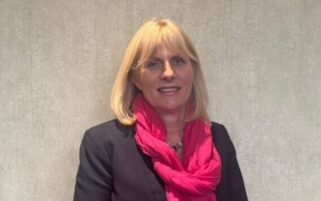An LMC has secured GP funding from their CCG for extra workload caused by ‘advice and guidance’ (A&G) requests in one area, Management in Practice’s sister title Pulse has learned.
GPs working in North East London are being funded £16.66, plus an additional £2.50 for admin, per A&G request by the local CCG – currently until the end of March.
A&G involves GPs accessing specialist advice by telephone or IT platforms, rather than referring patients for a hospital investigation.
Pulse understands the payment is for extra work that comes back to GPs as a result of the advice and that they are not eligible for the fee if the patient is referred to hospital.
In November, Pulse revealed that Tower Hamlets LMC had called for GP practices to be paid £12.50 per A&G episode to resource the extra workload.
It came after the local trust – Barts Health NHS Trust – launched a major trial requiring GPs to use A&G services before referring patients, with the potential for this to become a permanent measure.
But now Pulse has learned that GPs submitting A&G requests to Barts Health – mainly practices in Tower Hamlets, Newham and Waltham Forest – have secured an A&G fee of £16.66 plus £2.50 for admin.
Tower Hamlets LMC chair Dr Jackie Applebee told Pulse that North East London (NEL) CCG initially made the payments available from 1 January until 31 March, but is putting a ‘business case’ together to continue the funding beyond this quarter.
Dr Applebee suggested that the funding could be taken away from the hospital trust to reflect the transfer of workload into primary care caused by the move towards A&G.
She told Pulse: ‘It’s a crude attempt to quantify the work in primary care and then to present it to Barts and say, “Well, this is how much it’s cost us, so these are the resources we need to move”.
‘At the moment we haven’t received any money from Barts, we’ve just received the work.’
She said: ‘What they’re hoping to do then is to put a business case together, based on that, to quantify and say this is what it will cost in general practice to do this going forward.’
And while it’s unclear how the CCG is collecting the data for evaluation such as on how long A&G requests take GPs, it is a ‘good thing’ that they are ‘making an effort to bring some money with it’.
Dr Applebee said the system seems to be working well so far, although it is ‘a bit early to say’ – and what GPs really need is more workforce.
She said: ‘In theory, I’m quite happy with advice and guidance because it helps us to manage more complex patients. It’s good for the patient, because it’s much better for them if they don’t have to go to the hospital and for a GP, it helps us with our continuing professional development and all that stuff.
‘But the resources have to follow, we cannot just absorb that on top of everything else we do. It’s just not possible.’
She added: ‘It’s not just about money, it’s about the bodies to do it. That’s the big message that needs to get across to everyone really.
‘It’s great to have the money – [I’m] not knocking it, don’t get me wrong – but I still want other people – workforce – more GPs and proper workforce planning short and long term, so that we can all go home at a reasonable hour.’
A spokesperson for NHS NEL CCG said: ‘We are in regular discussion with our GPs about appropriate funding for work undertaken in primary care and our aim is ensuring that practices are fully supported to make greater use of advice and guidance services (A&G).
‘North east London clinicians have led the way in adopting A&G during the pandemic and are fully supportive of the benefits. This approach is crucial to getting patients access to the information and support they need, in the most appropriate setting, as quickly as possible.’
The Government’s long-awaited elective recovery plan – published last month – stressed that GPs’ role in tackling the NHS hospital backlog will focus on the use of A&G.
And NHS England last month claimed that GP A&G requests avoided one million ‘unnecessary’ hospital attendances in 2020/21 after ‘almost doubling’ throughout the year.
Last month, the health secretary claimed the NHS backlog would keep rising until 2024.
Meanwhile, while Barts is assessing advice and guidance as the single point of access for referrals in North East London, another major London CCG has set out an aim to cut GP referrals by 65% across seven major hospital trusts through A&G services.
GP leaders demanded an end to hospitals being allowed to mandate the use of A&G before accepting GP referrals of patients to secondary care at the LMCs Conference in November.
National GP A&G targets
PCNs are due to be incentivised for using A&G through ‘Investment and Impact Fund’ (IIF) points worth £9.9m in 2022/23, however GP leaders have raised concerns about its workload impact in general practice.
Meanwhile, NHS England has set a national target requiring GPs to use A&G for 12 out of 100 outpatient attendances by March this year.
And by March 2023, NHS England has said that integrated care systems (ICSs) must deliver ‘16 specialist advice requests, including advice and guidance (A&G), per 100 outpatient first attendances’ but it remains unclear how many should be GP A&G requests.
This story was initially published on our sister title Pulse.



